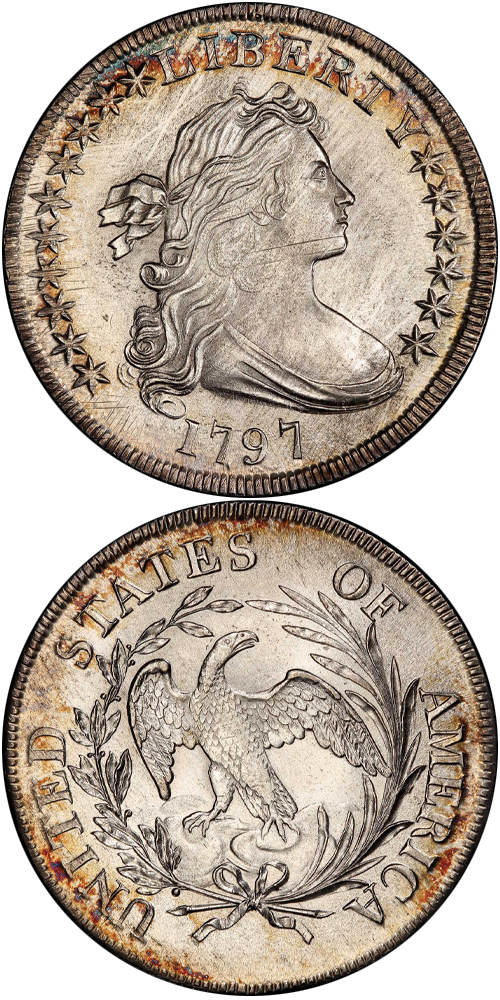1797 Draped Bust Dollar
10x6 Stars
The nation was less than a decade old, John Adams of Massachusetts had just taken the oath of office as the second President of the United States and the silver dollar was in its fourth year of production. In that year, Tennessee gained admission to the Union and to honor the new state, a 16th star was added to the obverse of all the coin denominations then in current production. For the 1797 silver dollar, the stars were arranged in one of two configurations: 9 stars on the left and 7 on the right or 10 stars on the left and 6 stars on the right. Only three die pairings have so far been identified: two with the 9x7 star pattern and a solitary variety with the 10x6 star arrangement, the Bowers-Borckardt 71 pairing as exemplified here. It soon became apparent that continuing to add stars for each state admitted into the United States was untenable and the 1797 silver dollars proved to be the first and the last of the denomination to possess 16 stars. In 1798, the standard star count was set at 13 to reflect the original colonies, though an aberrant issue from 1798 with 15 stars was briefly placed into service utilizing an obverse die that was originally prepared in 1795 or early 1796 but did not yet have the date applied to it.
It was standard practice in the early days of the Mint to continue to use dies until they were no longer serviceable regardless of the date on it, which muddles the actual production figures somewhat. Such is the case here with the 1797 dollars. The published records indicate that 7,776 dollars were struck in the calendar year, a quantity which is far too low based on the sheer number of surviving specimens. In his 2013 detailed study of early silver dollars, Bowers proposes that the true number is likely closer to 60,000 pieces for coins bearing the 1797 date. The estimated surviving population figures bear this out: anywhere from 2,750 and 4,000 specimens are extant for the entire issue -- a disproportionately huge number if the lower mintage figure is to be considered accurate. Among this substantial pool of available coins, there are only some 20 to 40 Mint State pieces. For the BB-71 variety, the numbers are even more stark: between eight and 10 coins are believed to exist at the MS-60 level or above.
The example to the left was sold by Stack's Bowers Galleries in the D. Brent Pogue Part IV Auction, where it realized $188,000.






